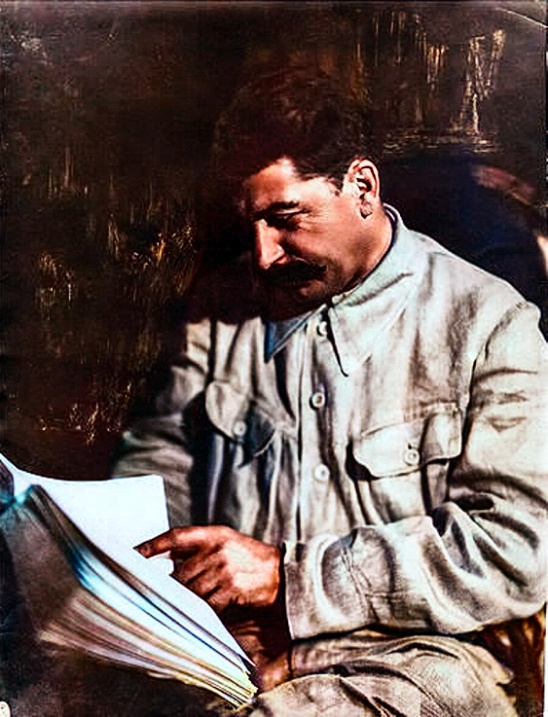Image is of the Freedom Band performing at the end of the Second National Congress of the Socialist Movement of Ghana, sourced from this article. The same article contains most of the information used in the preamble below.
A little over a week ago, the Socialist Movement of Ghana concluded its second National Delegates Congress in Aburi, gathering 300 delegates from across the country. There, they deepened their commitment to the working class of Ghana and committed to intensifying political education and organization at the grassroots. The SMG itself decided to not electorally contest the 2024 elections in Ghana, but still presented a manifesto, and nonetheless managed to get two SMG members parliamentary seats in the National Democratic Congress.
Anyway, back to the National Delegates Congress: the delegates agreed that the Western imperialist system is now under a profound crisis, in which the likely future is a heightening of brutality, chaos, and resource plundering - a future which must be resisted and organized against.
To summarize their various statements and condemnations:
- Inside Ghana: a commitment to women’s rights, youth empowerment, and environmental protection.
- A condemnation of the resource plundering of the Democratic Republic of the Congo by imperialist powers.
- A salute to the people of Mali, Niger, and Burkina Faso, in their campaign against outside imperial control in the Sahel.
- A condemnation of Morocco’s illegal occupation of the Western Sahara, and a call for the UN to identify the independence of the Sahwari people.
- A strong condemnation of Israel’s genocidal atrocities and massive terrorist operations against nearby countries, and support for Palestinian independence.
- Support for the people of Haiti against outside imperial domination.
- A call for the end of the blockade on Cuba and their removal from the State Sponsors of Terrorism list.
- Solidarity with Maduro and the people of Venezuela against the United States.
- A rejection of all imperialist aggression and sanctions against Iran.
- A condemnation of NATO’s decades-long military expansion eastwards towards Russia, especially as it has now resulted in massive devastation and risks a third world war.
- And finally, a commitment to Pan Africanism and international solidarity with all oppressed peoples around the world.
A platform I think we all can agree to!
Last week’s thread is here.
The Imperialism Reading Group is here.
Please check out the RedAtlas!
The bulletins site is here. Currently not used.
The RSS feed is here. Also currently not used.
The Zionist Entity's Genocide of Palestine
Sources on the fighting in Palestine against the temporary Zionist entity. In general, CW for footage of battles, explosions, dead people, and so on:
UNRWA reports on Israel’s destruction and siege of Gaza and the West Bank.
English-language Palestinian Marxist-Leninist twitter account. Alt here.
English-language twitter account that collates news.
Arab-language twitter account with videos and images of fighting.
English-language (with some Arab retweets) Twitter account based in Lebanon. - Telegram is @IbnRiad.
English-language Palestinian Twitter account which reports on news from the Resistance Axis. - Telegram is @EyesOnSouth.
English-language Twitter account in the same group as the previous two. - Telegram here.
English-language PalestineResist telegram channel.
More telegram channels here for those interested.
Russia-Ukraine Conflict
Examples of Ukrainian Nazis and fascists
Examples of racism/euro-centrism during the Russia-Ukraine conflict
Sources:
Defense Politics Asia’s youtube channel and their map. Their youtube channel has substantially diminished in quality but the map is still useful.
Moon of Alabama, which tends to have interesting analysis. Avoid the comment section.
Understanding War and the Saker: reactionary sources that have occasional insights on the war.
Alexander Mercouris, who does daily videos on the conflict. While he is a reactionary and surrounds himself with likeminded people, his daily update videos are relatively brainworm-free and good if you don’t want to follow Russian telegram channels to get news. He also co-hosts The Duran, which is more explicitly conservative, racist, sexist, transphobic, anti-communist, etc when guests are invited on, but is just about tolerable when it’s just the two of them if you want a little more analysis.
Simplicius, who publishes on Substack. Like others, his political analysis should be soundly ignored, but his knowledge of weaponry and military strategy is generally quite good.
On the ground: Patrick Lancaster, an independent and very good journalist reporting in the warzone on the separatists’ side.
Unedited videos of Russian/Ukrainian press conferences and speeches.
Pro-Russian Telegram Channels:
Again, CW for anti-LGBT and racist, sexist, etc speech, as well as combat footage.
https://t.me/aleksandr_skif ~ DPR’s former Defense Minister and Colonel in the DPR’s forces. Russian language.
https://t.me/Slavyangrad ~ A few different pro-Russian people gather frequent content for this channel (~100 posts per day), some socialist, but all socially reactionary. If you can only tolerate using one Russian telegram channel, I would recommend this one.
https://t.me/s/levigodman ~ Does daily update posts.
https://t.me/patricklancasternewstoday ~ Patrick Lancaster’s telegram channel.
https://t.me/gonzowarr ~ A big Russian commentator.
https://t.me/rybar ~ One of, if not the, biggest Russian telegram channels focussing on the war out there. Actually quite balanced, maybe even pessimistic about Russia. Produces interesting and useful maps.
https://t.me/epoddubny ~ Russian language.
https://t.me/boris_rozhin ~ Russian language.
https://t.me/mod_russia_en ~ Russian Ministry of Defense. Does daily, if rather bland updates on the number of Ukrainians killed, etc. The figures appear to be approximately accurate; if you want, reduce all numbers by 25% as a ‘propaganda tax’, if you don’t believe them. Does not cover everything, for obvious reasons, and virtually never details Russian losses.
https://t.me/UkraineHumanRightsAbuses ~ Pro-Russian, documents abuses that Ukraine commits.
Pro-Ukraine Telegram Channels:
Almost every Western media outlet.
https://discord.gg/projectowl ~ Pro-Ukrainian OSINT Discord.
https://t.me/ice_inii ~ Alleged Ukrainian account with a rather cynical take on the entire thing.
Zohran Mamdani was on The View this morning and they said that he’s has made “inflammatory” comments about Israel. He went on to say “What’s happening in Gaza is a genocide.” which elicited a huge round of applause from the audience. The establishment is so out of touch with the views of the average person on Israel/Palestine that they’ve even lost the wine mom audience of The View lmao
“We are seeing more operations right now in Gaza City than we have seen at any point in the last year and a half, anywhere”
This was Jon Elmer earlier today, leading off his Resistance Report on Electronic Intifada’s live stream. I am once again begging you all, if you are feeling any doomerism at all about Palestine, please watch Jon’s report. Palestine will be freed and when they are, it won’t be from sanctions placed on Israel by western governments or things like that; it will come down the bravery and determination of those who are fighting in armed struggle against their colonizers.
Edit: to clarify, Jon is referring to operations by the Resistance, not the IOF.
Right on cue, Italian labour unions move to shut down the country in a general strike due to the flotilla being intercepted.


Italy paralyzed as hundreds of thousands protest in solidarity with Gaza | The Cradle
Italian labor unions led a general strike that shut down roads, ports, and airports as Israel [sic] seized the last boat of the Gaza aid flotilla
A total victory for the neocons in the US, complete domination of both sides, the Dems are even using GW Bush era talking points in their internal discussions.

As someone else here brought up, Kamala Harris was basically dogwhistling about doing this herself with the talk about “transnational criminal organizations.”
Foreign policy blob gets what foreign policy blob wants. Doesn’t matter who is in charge.
IIRC, Biden promised to invade Venezuela in his epic “record player” rant during the 2020 Dem primaries.
Dems never change
So they’re gonna invade
Blowback Season 9
“haha, fuck your vladimir, sloppa poopani, freedom for ukraine!”
“ALL VENEZUELANS MUST DIE, IF YOU DISAGREE YOU ARE MADURO”
~ average lemmitor in a week or two
Second general strike in italy in 2 weeks, yesterday and today there were massive protests that started an hour or so after the flottilla was attacked.
Edit: incomplete list of cities in revolt, I hereby ask every hexberian to retract any slander against Italians

Edit 2: 200k people in Rome (almost 10% of the population) and 150k in Milan are protesting today, highways are being occupied rn
It looks like the Minnesota Public Utilities Commission voted to sell Minnesota’s public electric company (Minnesota Power) to BlackRock. Another big win for Tim Walz and the Democrats!
FBI cuts ties with Anti-Defamation League amid conservative backlash
FBI Director Kash Patel announces break with anti-Semitism watchdog amid outrage over description of Charlie Kirk.
LMAO

While Patel did not mention Kirk in his statement, his announcement came just a day after the ADL removed more than 1,000 entries about alleged extremism from its website amid right-wing outrage over references to the late activist.
The ADL said it made the decision as many of the terms were outdated and a number of entries had been “intentionally misrepresented and misused”.
In a since-deleted entry on Kirk and his youth organisation Turning Point USA (TPUSA), the ADL said Kirk promoted “Christian nationalism” and “numerous conspiracy theories about election fraud and Covid-19 and has demonised the transgender community”.
Fascist freaks at the ADL continue to expose their true nature.
Short rant and some thoughts about the left and immigration:
I commented below in response to the post about Putin’s blaming “mass immigration” for destroying European culture, and thought maybe to expand a bit more from that comment.
It’s been a bit unsettling for me this week because of the overreaction spontaneously erupted on the Chinese internet regarding the K visa. As a country not known for its openness for immigration, for about an 48-hour window, this was perhaps the first time that many - based on an unsubstantiated rumor - have had to grapple with the anxiety of facing “mass immigration”.
Although I’ve seen widespread latent and casual racism and xenophobia over the years, especially against Indians, this is really the first time that such spontaneous eruption of anti-immigration discourse that occurred in a very organic fashion, when the “fear of mass immigration” is suddenly being perceived as real instead of something you’d never thought could happen in your country.
The short version is that China announced a new K visa for foreign STEM talents back in August that would be implemented on October 1st, without much attention paid to it. Then last month, Trump imposed a $100k free on H-1B, and Western media started reporting on how China is going to benefit from it, and pointed to China’s K visa policy.
Somehow, someone put the two together and just 2-3 days before the National Day when the K visa was due to be officially implemented, fearmongering rumors began to spread virally on Chinese social media, insinuating that how it opens up the floodgates for foreigners to enter China.
To be fair, the policy announcement appears half-baked without much detail about how exactly it is going to be implemented, so it leaves people more confused than ever. You can apply for the visa if you are:
- 18-45 years old
- Holds a STEM bachelors degree from a “renowned” school or work in a “renowned” institute
- No language requirement
- No employment requirement
The biggest problem here lies in what exactly is the purpose of the K visa?
I doubt any foreigner who don’t speak Mandarin Chinese semi-proficiently will ever get hired by Chinese companies because most of them are absolutely not equipped to communicate in another language. So, where are these people going to find work?
If we’re talking about foreign talents working in academia, then there is already an R visa “high-level foreign talents” for top people in the field, yet the simple requirement here is simply holding a bachelors degree.
Finally, if we’re talking about foreign multinational corporations that are indeed equipped to accommodate English speakers, then these companies have their own recruitment process, competitive application process and visa sponsorship, not to mention very limited spots usually only available for the top graduates.
As such, it is easy to see where there is plenty of room for imagination, and fearmongering conspiracies were abound, with plenty of comments like “I can finally understand what MAGA / rednecks (红脖子) are going through in their country”.
In general, the complaints took on a few flavors (cw: racism, obviously):
- More competition in the labor market - “we already have plenty of Masters and PhD graduates with couldn’t find jobs, why are we trying to attract more foreigners with only Bachelor’s degree?” - this is the one I consider to be the most valid criticism.
- Anxiety about immigrants flooding the country - “We don’t want low-quality (“inferior”, 劣质) foreigners to flood our country! Have you seen how Indians have built an entire industry of “fake qualifications” to game the Western immigration system?” - this obviously refer to Indians and Africans whom many only know of through the most uncharitable stereotypes propagated through online viral content and have never interacted with any of them in real life
- Anxiety about “losers back home” Westerners - “Who do you think are the foreigners (洋人) that would want to come here? Obviously those who are losers who could no longer compete in their own countries!”
- Latent sexual anxiety about foreigners coming in and marrying the local women - this really just follows an already intensifying gender discourse™ taking place since the past year, in a country where there is already gender imbalance, and an ongoing trend where marriage registration has been trending down and divorce rates have been trending up (apparently has a lot to do with economic downturn).
- It’s actually a backdoor for rich overseas Chinese who have emigrated to come back - this is, funnily enough, the most likely explanation for the government’s policy that has remained so obscure, but what do we know?
Nonetheless, the actual reasons are not important. What is interesting, and scary, is the overreaction against the perceived “threat” of mass immigration, which was likely a culmination of a combination of factors, including the precariousness of the average people who are anxious about the unstable job market and economic uncertainty, being persistently fed with widespread viral content that propagate the most uncharitable stereotype about other countries, as well as the intensifying antagonism between the sexes as less and less people are interested in settling down to raise a family.
Typically, as leftists, we would associate this kind of anti-immigration anger to be intrinsic to capitalist countries, because the capitalists want the working class to hate each other. But how can you explain the situation in China?
A point to make here is that there is also increasing cognitive dissonance between perceiving one own’s country to have become a great superpower with the many advanced technologies, surpassing even the West, yet at the same time they are working harder and longer hours than ever, no stability in the job market, wages are barely rising, quality of life is not improving, the house prices remain far out of reach, and there is a general pessimistic outlook for future.
To give you an example, imagine you went through your primary school in the 2000s, chances are in a few years, your parents would soon purchase a new house, one that would be a huge upgrade over your childhood home in some provincial town. Things look to be getting better by the day, and you dream about doing the same one day.
Then, you went through middle/high school hoping to score in gaokao to get into university, obtain a degree and get a nice paying job post-college, settle down and raise a family. There was already some alarming trend about the property market, and the house prices are starting to look a bit out of reach, but nothing too much to worry yet.
By the time you are studying in university, the property price would have peaked and plunged. It would have been a good thing if it weren’t such a drag on the entire economy, and you are suddenly facing a worse prospect that you never thought would happen growing up: unemployment, or the poor prospect of getting employed.
This is how fast an economic trend can go in China - what takes several generations of wealth accumulation to happen in Western capitalist countries, it can happen in 10-15 years in China. You are literally experiencing the rise and fall in real time, and there is obviously a lot of cognitive dissonance to take in.
Yes, the country is now a superpower. We have the most advanced 6th gen fighter. We have the best EV industries in the world. The best robotics and automation in industries. But - is that making your life easier? Why are you only getting two off-days per month? Why are you still being asked to work overtime by your boss every damn week? Despite being more productive than ever, why are your wages not rising?
All of this anxiety is being coalesced into a latent rage. It is perhaps not surprising that people would lash out when they hear some fearmongering rumor about mass immigration.
And I think there’s some lesson for the left here when it comes to immigration:
- You better make sure you can create a system with a robust social safety net, minimum wage, job guarantee, free housing and healthcare that are all sacred rights to the workers.
- You must be able to convince the people that they are getting the fair distribution of wealth in the economy that are in proportion with their labor.
- You must be able to convincingly demonstrate that you have the economic means to implement all these policies in a fair manner, and that foreigners seeking employment in your country is not here to take away the wealth and the fruits of their labor, nor are they here to drive down wages and cause competition in the labor market.
Argentine Trotkyist and Feminist militant, Cele Fierro, member of the Worker’s Socialist Movement (Part of the broader Worker’s Left Front), is among those in the Flotilla bound for Gaza and has been apparently detained by members of the genocidal state of “israel”.
These people are a million times more valuable and more brave than every zionist that has ever existed. Godspeed to them!
And of course: DEATH TO “ISRAEL”
Venezuela denounces and condemns in the strongest terms the cowardly act of piracy carried out by Israeli occupation forces against the Freedom Flotilla on October 1, 2025.
The Bolivarian Republic of Venezuela denounces and condemns in the strongest terms the cowardly act of piracy carried out by Israeli occupation forces against the Freedom Flotilla on October 1, 2025.
This military boarding in international waters exposes, once again, the criminal nature of the Zionist regime, which attacks a civilian and peaceful mission whose sole purpose was to bring 5,500 tons of humanitarian aid to the Palestinian people subjected to hunger and extermination.
The blockade of humanitarian aid is a deliberate tool of war, the continuation of genocide by other means, seeking to annihilate the population through starvation to complement their indiscriminate bombings.
It is miserable and grotesque that those who perpetrate televised ethnic cleansing dare to describe ships loaded with food and hope as a “threat to security.”
The only real threat to world peace is Zionism, a colonialist and apartheid ideology that systematically violates international law and human decency.
Our unwavering solidarity is with the heroic Palestinian people and with the brave men and women who, risking their own safety, keep the flame of humanity alive in the face of Nazi-fascist darkness.
https://xcancel.com/MFG_SMB/status/1973011466090430932
turns out, small business tyrant boomers just might not be exactly the best guys at running manufacturing
Today I ran an experiment that exposed what I believe to be one of the biggest threats to America right now. I attempted to buy a small manufacturing company from a retiring owner.
more
The owner told me at one point they used to have way more employees and did way more sales than they did last year. There’s a lot of potential and he’d be willing to sell for 8X. He stressed the point “we don’t even have a sales team, so if you just focus on sales we could grow fast" The owner also said “my machines alone are worth a couple million" because that’s what he paid for them over the past 10-20 years, and he said he is getting calls/emails everyday of people wanting to buy his company. I tried explaining the limited asset value of 20yr machines and the difference between assets in place, fair market value, and liquidation value. He was pretty set on what he “heard” he could get for his company
So I changed the subject and asked about his workforce he said, “we have 8 guys but 5 of them are getting ready to retire like me, I hired them when I took over from my dad in the 90’s" and then said “kids nowadays just don’t want to work" while he puffed his cigar in a smoke-filled shop.
Americans are cartoon caricatures of themselves
This is the reality: America is losing it’s industrial future while small companies get stuck in the valley of death between owners retiring and outdated culture/ways of thinking. This is why 50% of our small manufacturing companies could shut down and liquidate. They don’t have succession plans and frankly many are unattractive, complicated and low-margin business that will take a mountain of effort to turn around. Instead of taking over the family business (as gen X was told they had to do) Millenials just got jobs making more than their parents without the stress of running a company/making payroll. if we want to support reindustrialization and domestic manufacturing, we need operators who understand the industry to step up to ownership and have a way to do so that doesn’t put everything they own on the line. We need patient capital and economic policy to empower them And we need real tech (made by people who have actually been in factories) that can enable them to do what they are good at (making parts) and less of what they hate (paperwork). Otherwise the factories of tomorrow won’t be American, they’ll be Chinese. but at least we’ll have another B2B SAAS platform with a 40x revenue multiple.
“patient capital”
 you, uh, may have picked the wrong economic system for that one, bud!
you, uh, may have picked the wrong economic system for that one, bud!I’m starting to feel like the whole of US industry has basically been running off of the fumes of WW2 when they just actually ran a planned economy. And that dividend’s payouts are finally running out. Economic planning is truly a wonderful thing, you can do your damnedest to destroy yourself with unrestrained greed, but it still takes decades to truly squander all the productive capacity you built during it, even if it was a relatively short period - see Russia, which even with all the post-Soviet looting of state industry still managed to maintain quite a lot of it, which is now coming in quite handy with the Ukraine war (while Western countries are struggling to even manufacture sufficient artillery shells, let alone tanks, planes, and all kinds of other equipment).
Israeli [sic] Knesset advances bill to execute Palestinian prisoners | The Cradle
National Security Minister Itamar Ben Gvir said the law is necessary to remind Palestinians of the ‘price tag’ for 7 October
weird how none of the IOF attack helicopter pilots that incinerated hundreds of fleeing vehicles or IOF tank crews that shelled occupier homes have to pay the ‘price tag’
another war crime explicitly against the geneva conventions, awesome
wait nevermind it’s actually allowed what the fuck


Dogshit international law, but it requires a “fair trial” and many (most?) of these prisoners haven’t had a trial at all so it’s actually not allowed no matter how loosely you interpret it.
So we got a fascist leader in Japan, a fascist leader in Italy, and a hindinberg motherfucker in Germany? Did we decide to jump forward a decade?















